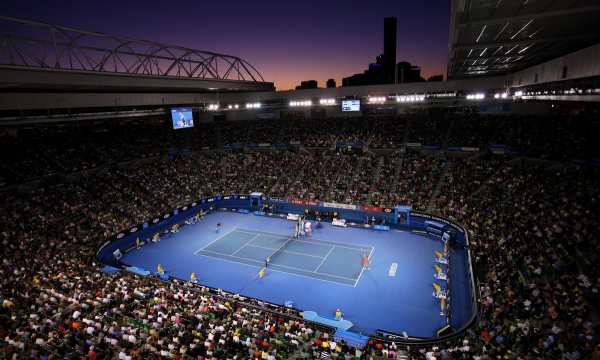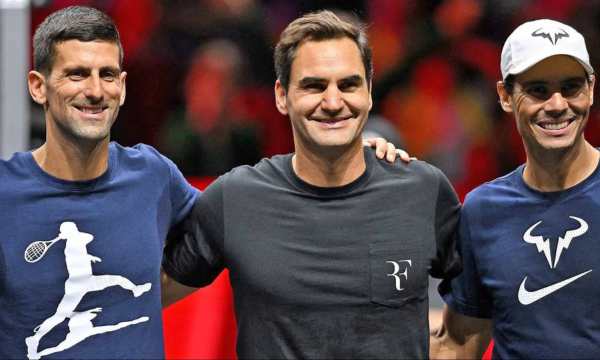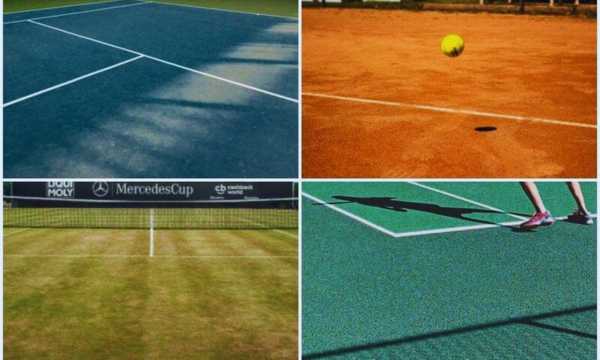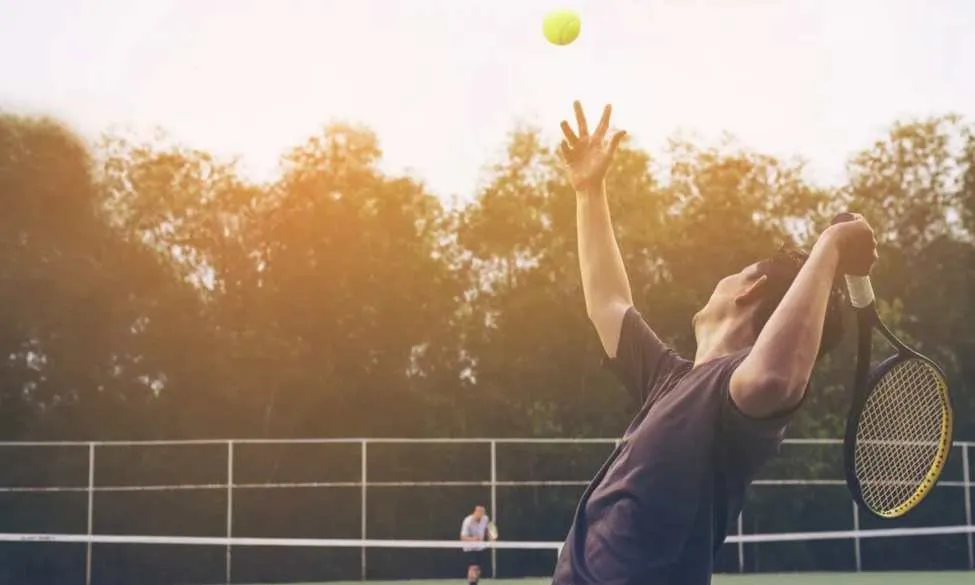The 4 Grand Slams: Everything About the Biggest Tournaments
The Grand Slams dominate the global tennis scene as the four most prestigious and challenging tournaments a player can face.
Ad
These century-old competitions transcend the sport, attracting billions of viewers and defining athletes’ legacies.
The magic of the Grand Slams lies in their unique traditions, distinct surfaces, and unforgettable stories that connect generations.
Each tournament has its own personality and specific challenges, testing different skills of the competitors.
In today’s article, you will discover all the secrets, stories, and curiosities behind these magnificent events that represent the pinnacle of world tennis.
Understanding the Elite of Tennis Tournaments
The Grand Slams constitute the pinnacle of world tennis, bringing together the greatest talents in four events spread throughout the annual calendar.
These tournaments stand out for the maximum points (2000 points) offered to the champions in the ATP and WTA rankings.
Together they sum up more than 500 years of combined history, carrying traditions that span generations of fans and players.
The best-of-five sets format presents a physical and mental challenge unparalleled in other circuit tournaments.
The prestige of the Grand Slams is also reflected in the financial prizes, which exceed 50 million dollars in each event.
The main draws feature 128 players in singles, producing 127 matches over two intense weeks of competition. A true test of endurance for those seeking the ultimate glory.
Each Grand Slam has its characteristic surface: clay, grass, and hard court, testing the versatility of players in completely different conditions.
Global television coverage reaches more than 180 countries, transforming these tournaments into cultural events that transcend the sport.
Australian Open: The “Happy Slam” in Melbourne
The Australian Open opens the Grand Slam calendar in January, bringing the heat of the Australian summer and the contagious energy of the fans at Melbourne Park.
Affectionately nicknamed the “Happy Slam,” the tournament combines a festive atmosphere with extremely challenging playing conditions.
Temperatures often exceed 40°C, testing the physical limits of athletes on hard courts.
Inaugurated in 1905, the tournament only gained international status after 1988, when it moved to the modern Melbourne Park complex.
The main courts, Rod Laver Arena and Margaret Court Arena, honor Australian legends who dominated tennis in the 1960s and 1970s.
The retractable roof system on the main courts allows play to continue even during the famous Australian summer storms. Historical highlights:
- Novak Djokovic has won ten titles, establishing himself as the greatest champion of the tournament.
- Margaret Court won 11 times in the amateur and professional eras.
- In 2022, Rafael Nadal staged one of the greatest comebacks by overcoming Daniil Medvedev in the final.
- Serena Williams won the tournament in 2017 while eight weeks pregnant.
The Australian Open stands out for its constant innovation and fan accessibility, maintaining its status as one of the most beloved Grand Slams by players.

Australian-Open-court-(Source-Google)
Roland Garros: Epic Matches on Parisian Clay
Roland Garros represents the ultimate challenge on clay, turning tennis into strategic matches of patience and physical endurance on the Parisian courts.
The French tournament, held between May and June, is distinguished by its characteristic orange surface that drastically alters the ball’s behavior.
Inaugurated in 1891, this Grand Slam carries a strong cultural identity, with its main stadium, Philippe-Chatrier, housing more than 15,000 passionate spectators.
The Court Suzanne-Lenglen, the second main arena, honors the French tennis player who dominated the tournament in the 1920s, winning six times. Epic facts about Roland Garros:
- The only Grand Slam on clay.
- King of Clay: Rafael Nadal (absolute record with 14 titles).
- Queen of Clay: Chris Evert (female record with 7 titles).
- Youngest Champion: Michael Chang (17 years old in 1989).
- Famous for long and exhausting matches.
Among the Grand Slams, Roland Garros represents the most challenging, where strategy and physical conditioning often surpass pure power.
Wimbledon: Tradition, Grass, and English Elegance
Founded in 1877, Wimbledon preserves rituals such as the all-white dress code for players and the presence of British royalty in the Royal Box.
The characteristic green grass and the famous strawberries and cream complete the unique experience that attracts fans from around the world.
The grass surface, increasingly rare on the circuit, provides fast games with shorter points and values serve-and-volley play.
The British weather often interrupts matches with rain, creating moments of suspense despite the implementation of retractable roofs on the main courts.
The Centre Court, with a capacity of 15,000 people, breathes history in every seat. Tournament records:
- King of Grass: Roger Federer holds the male record with 8 titles.
- Queen of Grass: Martina Navratilova is the greatest female champion with 9 titles.
- The 2008 final between Federer and Nadal is considered by many to be the greatest tennis match in history.
- Longest match in history: Isner vs. Mahut (2010) lasted 11 hours and 5 minutes.
Wimbledon remains one of the Grand Slams that balances tradition and modernity, maintaining its unique identity in world tennis.
US Open: Speed and Vibrant Nights in New York
The US Open closes the Grand Slam season with New York energy, combining sports spectacle and entertainment on the fast courts of Flushing Meadows.
Held in late August and early September, the American tournament brings the electrifying atmosphere of the “city that never sleeps” to tennis.
The night session at Arthur Ashe Stadium, the largest tennis arena in the world with 23,771 seats, provides a show of lights, music, and top-level tennis.
The DecoTurf hard courts are the fastest among the Grand Slams, favoring bold players and powerful shots.
The tournament innovated by introducing the tie-break in the fifth set, night lighting, and electronic review technology before the other Majors.
Since 2018, all courts have Hawk-Eye Live, eliminating line judges in favor of technology. Impressive curiosities about the US Open:
- First Grand Slam to offer equal prize money for men and women (1973).
- The only tournament with a decisive tie-break in all sets since 2022.
- Noisy and interactive environment, different from the silent etiquette of other Grand Slams.
- Serena Williams won her first (1999) and last title (2014) in Flushing Meadows.
Jimmy Connors, Pete Sampras, and Roger Federer share the male record with five titles each in the open era. In the women’s draw, Chris Evert and Serena Williams lead with six titles each.
The Dream of Winning the 4 Grand Slams
Winning all four Grand Slams represents the pinnacle of any tennis player’s career, a feat so rare that only five players have achieved the “Career Grand Slam” in the open era.
Rod Laver made history as the only man to achieve the “Calendar Grand Slam” (all four titles in the same year) in 1969. In the modern era, only Novak Djokovic came close, winning three in 2021 before losing the US Open final.
Steffi Graf achieved the impossible in 1988, winning all four and the Olympic gold in the same year, a feat known as the “Golden Slam.”
Among women, Margaret Court also completed the “Calendar Grand Slam” in 1970, while Serena Williams achieved the “Serena Slam” twice (2002-03 and 2014-15), winning all four Majors consecutively but not in the same calendar year.
List of Career Grand Slam winners:
Mens
- Rod Laver (AUS)
- Fred Perry (GBR)
- Don Budge (USA)
- Roy Emerson (AUS)
- Andre Agassi (USA)
- Roger Federer (SUI)
- Rafael Nadal (ESP)
- Novak Djokovic (SRB)
Womens
- Maureen Connolly (USA)
- Doris Hart (USA)
- Shirley Fry (USA)
- Margaret Court (AUS)
- Billie Jean King (USA)
- Chris Evert (USA)
- Martina Navratilova (USA/CZE
- Steffi Graf (GER)
- Serena Williams (USA)
Who Shone the Most on the Grand Slam Stages?
The Grand Slams have enshrined the greatest names in tennis history, establishing standards of excellence that seem impossible to surpass.
Novak Djokovic leads the male ranking with 24 titles, followed by Rafael Nadal also with 24 and Roger Federer with 20, forming the legendary “Big Three” that revolutionized the sport.
Among women, Margaret Court holds the absolute record with 24 titles, followed closely by Serena Williams with 23.
The dominance of these athletes reflects not only exceptional talent but also longevity and adaptability to different surfaces.
Pete Sampras dominated with 14 titles before the Big Three era, while Steffi Graf won 22 titles with her powerful forehand and extraordinary mobility. Impressive records:
- Nadal has an incredible 14 titles in a single Grand Slam (Roland Garros).
- Djokovic is the only one to win each Grand Slam at least three times.
- Serena Williams won the Australian Open while eight weeks pregnant in 2017.
- Roger Federer won 41 consecutive Grand Slam matches between 2005 and 2007.
Other names like Björn Borg, Ivan Lendl, Martina Navratilova, and Chris Evert also built extraordinary legacies on the most important stages of world tennis. Each generation produced its own heroes in these tournaments.

Big-Three-Djokovic-Nadal-and-Federer-(Source-Google)
Curiosities and Remarkable Stories from the Grand Slams
The Grand Slams accumulate fascinating stories that transcend results and statistics, revealing the human and unexpected side of elite tennis.
In 2010, John Isner and Nicolas Mahut played the longest match in history at Wimbledon, with an incredible 11 hours and 5 minutes spread over three days, ending 70-68 in the fifth set. This marathon forced the tournament to change its rules later.
The 1995 Australian Open made history when chair umpire Bruno Rebeuh’s chair was hit by a ball after Sergi Bruguera lost his patience in a controversial decision.
At Roland Garros, Michael Chang’s victory over Ivan Lendl in 1989 became legendary when the American, suffering from cramps, began serving underhand and eventually became the youngest male Grand Slam champion. Unforgettable moments:
- Andy Murray ended 77 years of British waiting for a male champion at Wimbledon in 2013.
- The 2018 US Open women’s final was marked by controversy between Serena Williams and umpire Carlos Ramos.
- In 2001, Goran Ivanisevic won Wimbledon as a wild card after three lost finals.
Interestingly, the Wimbledon trophy contains a small pineapple on top, symbolizing hospitality, while the Australian Open trophy is redesigned every few years.
Conclusion
These four competitions define careers, reveal champions, and create memories that withstand the test of time.
The quest for the titles of the Australian Open, Roland Garros, Wimbledon, and US Open motivates generations of athletes to surpass their physical and mental limits.
The distinct surfaces and conditions of each Grand Slam ensure that only the most complete players can consistently triumph in all of them.
Respect for tradition coexists harmoniously with innovations that enhance the experience for players and spectators.
For true tennis fans, following the Grand Slams throughout the year is a ritual that connects fans on all continents, transcending cultural and linguistic barriers.
FAQ
Which Grand Slam is considered the most prestigious?
Who has the most Grand Slam titles in history?
What does it mean to complete the “Grand Slam”?
What is the difference between the surfaces of the Grand Slams?
Which Grand Slam offers the highest prize money?
 Tennis Courts: Understand the Advantage of Each Surface
Tennis Courts: Understand the Advantage of Each Surface
Believe it, tennis courts can completely transform your game! Keep reading! Ad Have you noticed how the same match can feel completely different depending on where […]
Keep reading Top Apps to Watch Tennis Live on Android and iPhone
Top Apps to Watch Tennis Live on Android and iPhone
Watching tennis live on a phone has never felt so smooth, and the last month brought meaningful upgrades that make it even better. Ad With refined […]
Keep reading Learn How to Improve Your Tennis Serves with These Tips!
Learn How to Improve Your Tennis Serves with These Tips!
A reliable tennis serve multiplies your options on every point. It sets the tone, opens angles, and keeps opponents guessing. Ad Today, modern insights go beyond […]
Keep reading